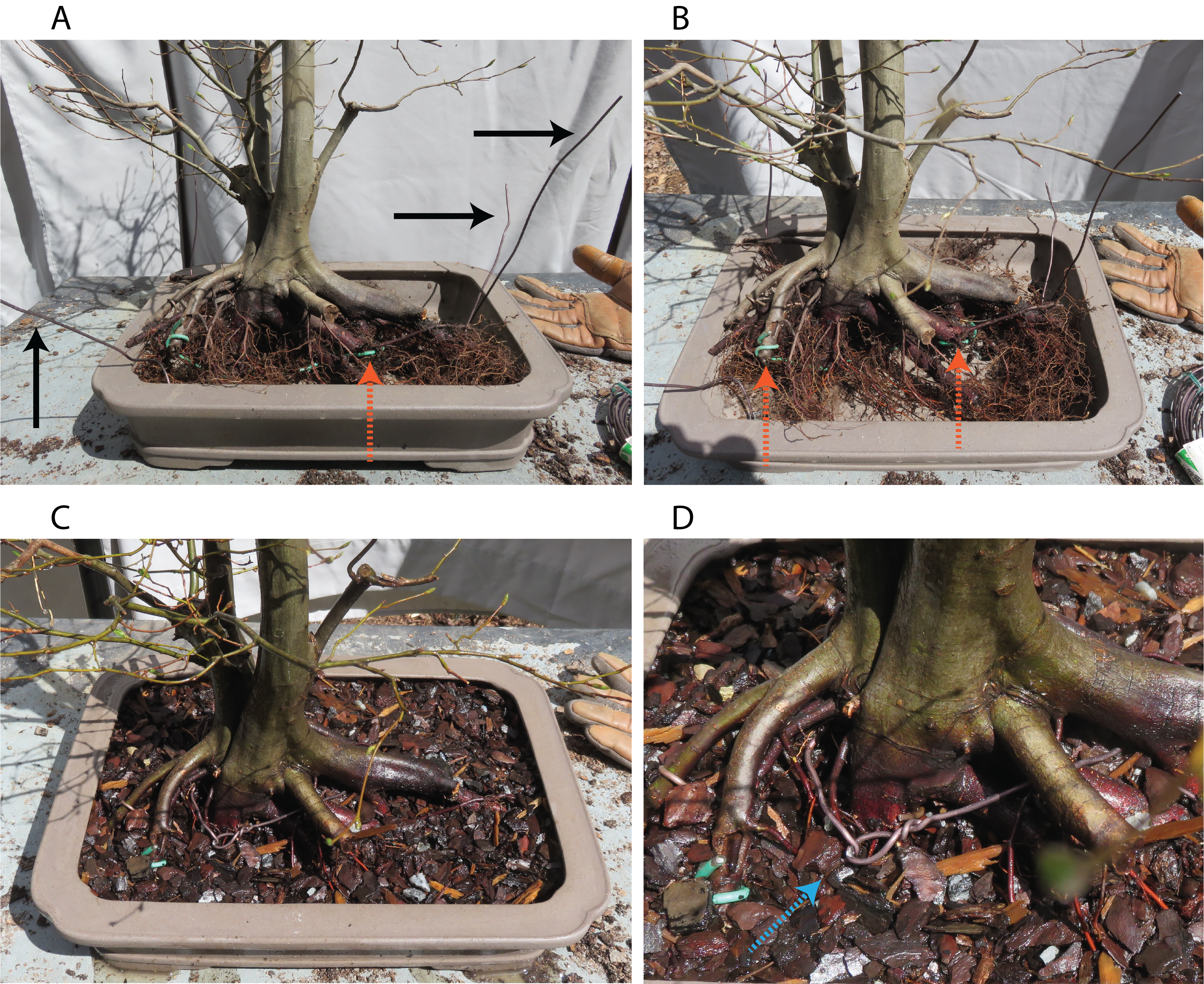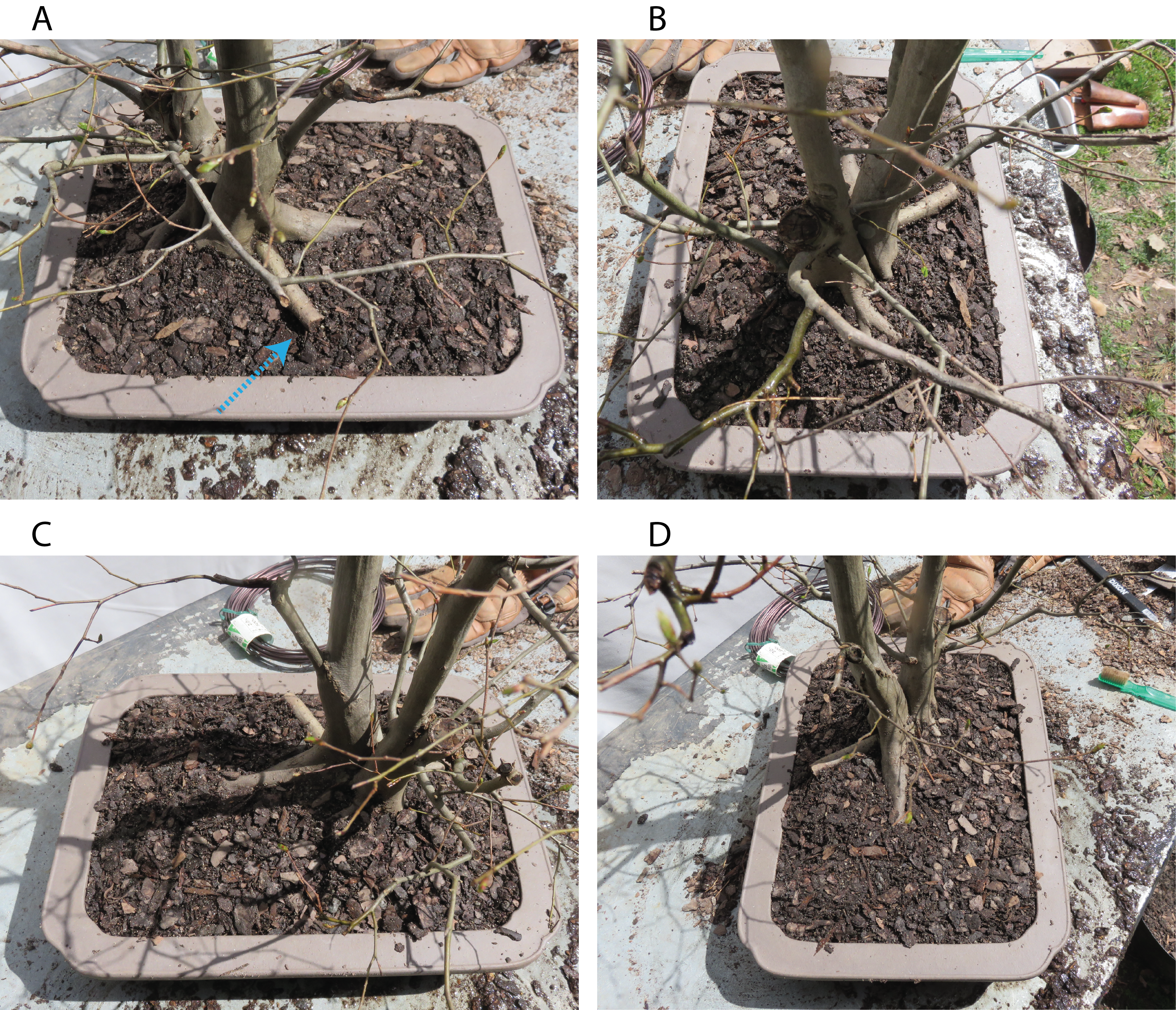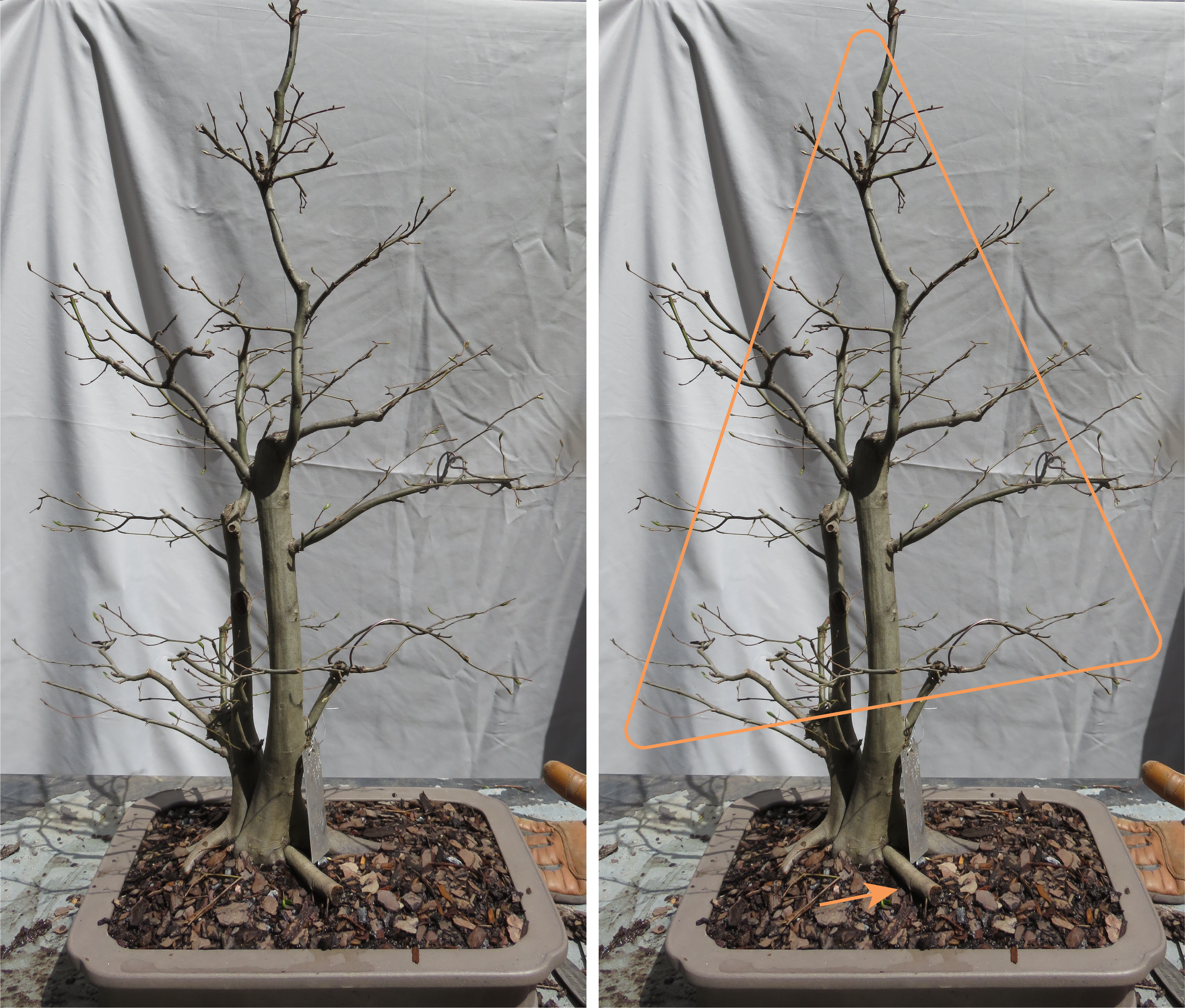Chapter 25 Transitioning a Tree From Growing to Training
25.1 When Should a Tree Go Into a Show Pot?
At some point you make the decision that it is time to move a tree from a plastic, wood, or fabric training container into a formal bonsai container. This does not mean the tree is finished; no tree ever is. Stylists differ on when they like to switch their trees. Personally, I like to switch a tree from a training container to a formal container when:
- I have finished most of the below-ground root development; having many strong fine roots helps the tree cope with life in a small container.
- the nebari looks substantial, because it will not enlarge much in the small container.
- the trunk line is set and the main branches are in place.
- I can see how tall the tree will be; I need that to choose the right depth container.
I find that moving a tree to a formal container changes how I see the tree. It becomes an artistic project instead of a horticultural one. I stop trying to develop structure, and start thinking about how to make the tree aesthetically pleasing. I slow down and consider cuts more carefully. I also begin thinking about the tree and container together. Things I will continue working on while a tree is in a formal container include:
- Growing out secondary branches and building terminal branch ramification;
- Refining the silhouette;
- Establishing any accent plants and moss (especially if it is a saikei or multi-tree planting);
- Leaf pruning to reduce leaf size; and
- Routine repotting and root pruning.
Some stylists only move trees to their formal containers when they think the tree is ready to display in a show. I know of a few that never keep their trees in their formal show containers. Instead they keep their show trees in a plastic or wooden “daily container” that is essentially the same size and shape as the tree’s formal show pot, but is a fraction of an inch smaller. When it is time to show the tree, it is transferred to its show container, and the gaps filled with fresh soil. When the show ends, the tree goes back to its daily container. One of the reasons I have heard for this is that high-quality containers are expensive and start to show wear if they are used while a tree still is in training. While I get that point of view, I show very few trees. They are for my enjoyment more than anything. Not using show containers would mean I hardly ever get to see my trees in their intended state.
My takeaway advice to anyone getting started would be, if a tree is physically ready for the confines of a show container, put it there when it looks right to you. Always remember that it is YOUR tree, and if you like it, then it is a good tree.
25.2 Moving a Tree Into a Show Container
To demonstrate how to move a tree to a show container, I selected a twin-trunk American hornbeam that I grew from locally collected seed. A pair of two-year old seedlings were put in the ground to thicken up. After 4 years in open ground, the intertwined trees were moved to a fabric bag for another 4 years to help develop the roots. I’ve also been trimming the top regularly to develop basic branching.
This twin-trunk is being potted up in mid-March, just as its buds are starting to peek green at the tips. American hornbeams tolerate being bare rooted and repotted up until the leaves are almost fully expanded. After that I prefer not to repot them, or at least not remove all of the soil and be more conservative with any root pruning.
The soil mix and how I prepared the pot are described in Sections 19 and 29.

Unpotting and initial cleanup. Left: the starting tree. Right: the unbagged tree showing the root mass that has developed over 4 years. Around 75% of the soil mix fell away from the roots with a few shakes. Much of the rest fell out while I untangled and combed out the roots. I rinsed the roots several times with the garden hose to loosen the soil and keep the roots damp. Original photos by Dan Johnson.
I selected a plainly colored __ x __ by __ deep Xixing pot for this tree. This is not ideal for a deciduous tree, but it was the only pot I had available at the time that was the appropriate size. Assuming the tree adapts well, I will start shopping for a show-quality pot to use the next time I repot in 2 years.

Gauging the size and position of the tree. A, B. Sizing the tree. To get the tree into this container I had to remove about 25% of the fine roots shown in the previous photos. You can see the 2mm aluminum wires I am using to hold the tree in the pot (black arrows in A), and the insulated green copper wire that I used to force two larger roots to bend. The green wire on the left is pulling a surface root down below the soil line. The green wire on the right is holding a larger woody root horizontally, so the tree sits lower in the container. Wiring the root (vs. removing it) is the better choice in this case because it has a large number of the fine feeder roots. Once more feeder roots have developed on shallower woody roots, I will likely remove the deeper woody portion.
C. The tree wired in and partially filled in. I usually partly fill a container with soil mix and work it in around the roots, then soak the roots and soil with a garden hose. This washes the soil mix down into voids, making it easier to find and fill them.
D. Close-up of the wire (blue arrow) holding the tree in the pot. A second pair of wires that are buried in the soil wrap around the roots from the opposite side.
Original photos by Dan Johnson.

The tree after I have finished filling in the soil. There is a large protruding root in Panel A (blue arrow) that will need to be removed later. I left it for now because it has many small feeder roots attached to it. Once the tree settles, I hope to remove it. B, D. Tree viewed from the sides. C. The back of the tree. Original photos by Dan Johnson.

The completed tree. There is still a great deal of detail work to be done on this tree. My goals for the next two years are to adjust branching so the main bulk of the foliage and branches are contained in the asymmetric orange triangle. I also will be monitoring the front-facing root (orange arrow). Several dead spots on the back side of the trunk and main branches also will need carving then wood preservation. Original photo by Dan Johnson.
This repotted tree will spend several days in dappled shade and protected from the wind. Once the buds open fully I will start giving it more sun. This tree will not be fertilized for at least 4 weeks.